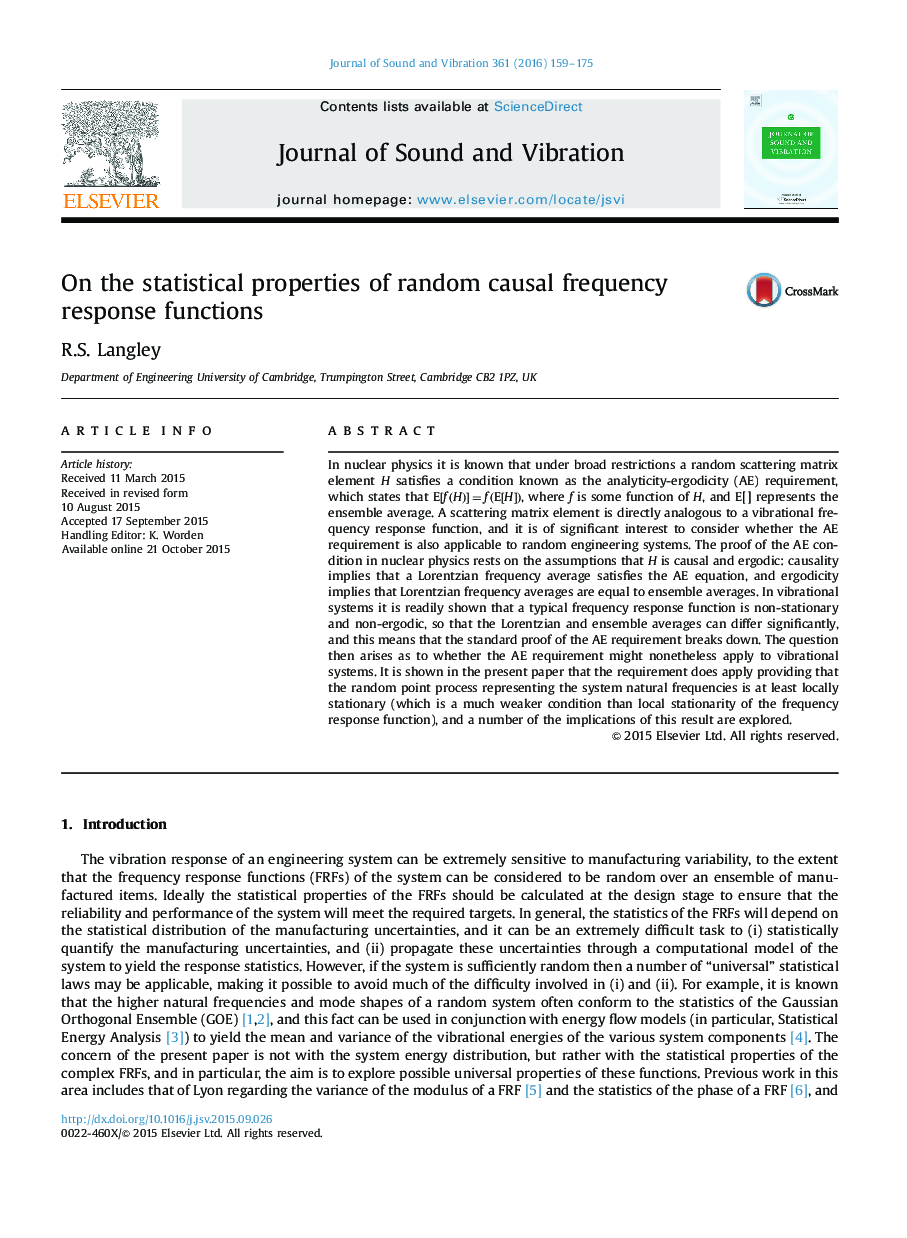| Article ID | Journal | Published Year | Pages | File Type |
|---|---|---|---|---|
| 287161 | Journal of Sound and Vibration | 2016 | 17 Pages |
In nuclear physics it is known that under broad restrictions a random scattering matrix element H satisfies a condition known as the analyticity-ergodicity (AE) requirement, which states that E[f(H)]=f(E[H])E[f(H)]=f(E[H]), where f is some function of H, and E[] represents the ensemble average. A scattering matrix element is directly analogous to a vibrational frequency response function, and it is of significant interest to consider whether the AE requirement is also applicable to random engineering systems. The proof of the AE condition in nuclear physics rests on the assumptions that H is causal and ergodic: causality implies that a Lorentzian frequency average satisfies the AE equation, and ergodicity implies that Lorentzian frequency averages are equal to ensemble averages. In vibrational systems it is readily shown that a typical frequency response function is non-stationary and non-ergodic, so that the Lorentzian and ensemble averages can differ significantly, and this means that the standard proof of the AE requirement breaks down. The question then arises as to whether the AE requirement might nonetheless apply to vibrational systems. It is shown in the present paper that the requirement does apply providing that the random point process representing the system natural frequencies is at least locally stationary (which is a much weaker condition than local stationarity of the frequency response function), and a number of the implications of this result are explored.
